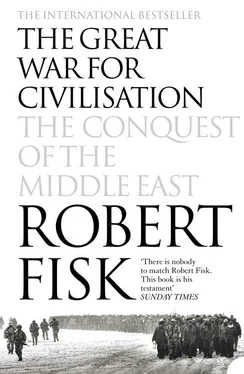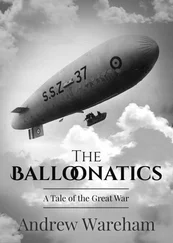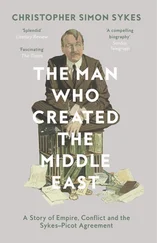The crowds were strategically placed to catch the television cameras, and journalists were allowed – indeed, encouraged – to approach the embassy and stare through the black wrought-iron gates. The hostages locked in the main embassy buildings – the men with their hands tied – could not be seen, although students had spray-painted slogans on the roof of the reception block. Just inside the forecourt, they now erected a painting 5 metres high, a symbolic work inspired by Joe Rosenthal’s photograph of US marines raising the Stars and Stripes on Iwo Jima in 1945; in this case, however, Muslim revolutionaries had replaced the marines and they were struggling to raise a green Islamic flag, one end of which had miraculously turned into a hand strangling the Stars and Stripes. The occupation had thus become theatre, complete with painted scenery. It was more than this. It was a carnival.
It was also a mistake to believe that this represented a falsehood. Individual Iranians expressed their contempt for the Shah all too eloquently – and all too often in American accents. ‘You wanna know why we want the damned Shah?’ a student at Tehran’s Polytechnic University asked me. ‘Well, I tell you – it’s ’cos that man stole fifty billion dollars from Iran.’ An Iranian air force private wandered up to join our conversation. ‘That bastard staged the biggest heist in history,’ he said. The airman’s accent sounded like east side New York, and it said more about Iran’s relationship with America than any amount of political rhetoric. Never before, it seemed, had so many revolutionaries lived, worked or been educated in the country which they now held responsible for so much of their past suffering. *
During the Shah’s rule, there were sometimes half a million Iranians in the United States. Many were at American universities or colleges; some were escaping from the Shah’s regime. Many thousands were undergoing military training; one of the perks available to Iranian army officers was a regular free trip to New York on an Iranian air force jet. Dr Ibrahim Yazdi, who had just resigned as foreign minister, worked for seventeen years as a doctor in America, associating with Iranian students opposed to the Shah. Dr Mustafa Chamran, who had been appointed assistant prime minister in July 1979 and was to die a ‘martyr’ in the Iran – Iraq war, helped set up the Islamic Students Association in America in 1962, together with Yazdi and Sadeq Qotbzadeh, now the acting minister of ‘national guidance’.
An Iranian girl who had studied journalism in New York – who had experienced, as she put it, the fruits of American democracy – demanded to know why Americans were prepared to support the Shah’s regime when it had opposed individual freedom and dissent. ‘In the United States, we learned all about liberty and the freedom to say what we wanted to say. Yet America went on propping up the Shah and forcing him to squander Iran’s wealth on arms. Why did it do that? Why was America a democracy at home and a dictator abroad?’ There was, of course, a contradiction here. The fact that President Carter, whose campaign for human rights was well known in Iran, should have continued to honour America’s political commitment to the Shah before the revolution – in however tentative a way – was regarded as hypocrisy. Yet the Carter administration was opposed to the anti-democratic nature of the Shah’s regime and, within the limits of diplomacy, Carter had urged the Iranian monarch to liberalise his country.
Iranians argued that this was too ambiguous a position to respect, and it was difficult to read some of Carter’s statements during the last months of the Shah’s rule without sensing a certain naivety in the American president. In November 1978, for example, Carter was describing the Shah as ‘a friend, a loyal ally’; he would say only that criticism of the Shah’s police state was ‘sometimes perhaps justified’, adding that he did not know the ‘details’ of the criticism. Yet Iranian condemnation often seemed directed at the actions of previous American administrations: at the Eisenhower or Kennedy or Nixon governments. The students, when they shouted abuse about Carter, appeared to be voicing sentiments they once felt about the policies of Henry Kissinger, who had so powerful a role (as US Secretary of State) when they themselves worked and lived in the United States. Comparatively few had any experience of the Carter administration – except for the knowledge that Carter refused to deport the Shah to Iran. Few of the students outside the embassy gave much thought to the long-term outcome of the embassy occupation, to the possibility that it might result in the election of Ronald Reagan, who would take a much less tolerant interest in world affairs and show a much greater enthusiasm for Iran’s external enemies.
Iranian reaction to the smaller ‘Satanic’ powers was almost quixotic. At the British embassy, still daubed with paint from earlier demonstrations, a crowd arrived to express its satisfaction that Shapour Bakhtiar, the Shah’s last prime minister, had not been given asylum in the United Kingdom. When the same demonstrators reached the French embassy – the country in which Bakhtiar had been given temporary residence – they expressed their appreciation at the sanctuary France had given Ayatollah Khomeini before the revolution.
But no political démarche could unscramble the US embassy siege. The Europeans, the Papal Nuncio, Sean McBride – a founder of Amnesty International – seventy-five ambassadors representing the entire diplomatic corps in Tehran: all found their appeals ignored. The ambassadors could not even visit Bruce Laingen, who was in the Iranian foreign ministry when the embassy was taken and remained there until his release in 1981. Ayatollah Khomeini sternly informed the Pope that ‘Jesus Christ would have punished the Shah.’ Iranian television broke into a showing of The Third Man to announce that Iran was halting its daily supply of 600,000 barrels of oil to the United States – a rather hurried response to the decision already taken by the Carter administration to suspend oil imports from Iran. On 14 November, Iran announced the withdrawal of $12 billion of government reserves from American banks and Carter promptly froze Iranian funds in the United States. Each new step reinforced the power of the theocracy governing Iran and reduced the influence of the leftists.
Half a million students gathered near Tehran University on 15 November in support of the Fedayeen, the left-wing guerrilla movement which was now illegal in Iran and which had not supported the embassy takeover. But inside the campus of Tehran University I found Mehdi Bazargan at Friday prayers, sitting in a grey sweater, cross-legged on the ground, and listening to Ayatollah Hussein Ali Montazeri, the head of the committee of experts who had just written the new Islamic constitution for Iran. He was telling his audience that ‘the will of the Iranian people was behind the occupation’ of the embassy. Yazdi sat next to Bazargan, who had just resigned because the embassy siege had undermined his government. Article 5 of Montazeri’s new constitution stated that a religious leader with majority support – ‘a just, pious, enlightened, courageous and sagacious person’ – would become guardian of the nation. It was obvious that this arduous, not to say spiritually wearying, role would be given to none other than Ayatollah Khomeini.
In this new theocracy, there was going to be no place for the communist Tudeh party. After the overthrow of Mossadeq in 1953, the Shah had executed some of its leaders; others fled the country. Soon it would be the party’s fate to be crushed all over again, this time by Khomeini. But in the winter of 1979, it was still officially supporting the Ayatollah – even if Nouredin Kianouri’s office walls were the only ones in Tehran without a picture of the Imam. There was a copper-plate portrait of Lenin above the stairs and the secretary-general of Tudeh frowned when I asked him why the Ayatollah was not staring stiffly down upon his desk.
Читать дальше












